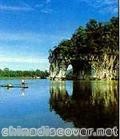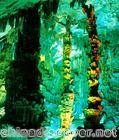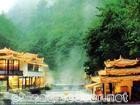Li River

Overview
The charming Li river, one of the major attractions of the Guilin/Yangshuo region, has been described as "a green silk ribbon with hills like jade hairpins' and is ideal for exploration on a boat. The meandering 65km cruise lasts 5 hours and takes you past a /panorama of bamboo groves, sleepy villages, karst peaks and fisherman on rickety bamboo fafts fishing with cormorant birds. Most cruises go down river to Yangshuo and then bus it back to Guilin, though some cruise begin from Yangshuo and go upriver to Guilin. The Best times are Spring and Autumn; the Summer can be overwhelmingly hot and muggy while the winters have low water levels.
Know more
Originaing in Mao'er Mountain in Xin'an county northeast of Guilin, the Li River winds its way southeast for about 437 km, passing through Guilin, Yangshuo, Pingle, Zhaoping and finally meets Xi River in Wulin. It boasts the largest and most beautiful scenic area in China and attracts thousands of visitors each year.
The scenery along the Li River, which snakes all the way from Guilin, will knock you senseless-it's got the Chinese ideal of water and mountains. Farmers, children and water buffaloes are visible along the many river bends playing, washing, collecting water or transporting their day's catch. Fishermen come in teh feathered coat of cormorants, birds perching on their master's bamboo boats waiting for prey. The metal clasped around their neck stops them from swallowing their catch.
Hiking, biking, rafting or swimming are several ways to appreciate Li River's charms. To beat the noonday heat, take a leaf from the village children frolicking in the clear river water, often seen watching over a herd of buffaloes or wielding homemade fishing rods fashioned from bamboo.
Bamboo groves and willow trees line both banks of the waterfront, and local use the light but hardy plant to build wafer-thin rafts to fish, rinse vegetables or ferry tourists from one embankment to the next. When visiting the water caves, these bamboo river taxis will bring you close up to stalactites as they slide effortlessly beneath dipping limestone canopies.
Must see
Along the cruise, you'll pass by whimsically named formations given by tourists of old, though a strong imagination may be needed to fully visualize their namesake. South of Millstone Hill and the gray-bricked riverside billage of Daxu is Bat Peak with cliffs resembling bats. Further along is Dragons Play in the Water, the rocky outcroppings dive into the water, inspiring a legend that dragons were sent here by the Jade Emperor to retrieve the fragrant flowers that grow in abundance during Spring. The riverbank should make any garderner green with envy as the plant life is lush and varied with thick bamboo forests and rice paddies inhabited by water buffaloes.
Looking Out for Husband Rock resembles a woman with a young child on her back gazing longingly down the river for the return of her husband.
Following is Caoping Village and on the eastern bank is Crown Cave, which has a deep underground river. continuing on the the village of Yangdi, the small villages along the river are typical of the architecture found in this region. Next is the village of Daxu, which features gray brick buildings covered with gray tiles and upturned eaves.
Before reaching the village of Xingping, you'll meet the Boy Worshipping Guanyin, which resembles a toddler kneeling in prayer, giving his respects to the Buddhist goddess of mercy.
After that is the Nine Horses Painting Hill, a jagged outcropping with the imprint of a wild herd of horses, though these horses can be clusive, most peop/le can only see seven.
As you reach the area surrounding Xingping, some of the most striking scenery along the river comes into view. If you decide to stay in Yangshuo, you can readily return to the area for a second close-up visit. Local travel agents can arrange personalized tours that include visits to the various picturesque villages in the area.





